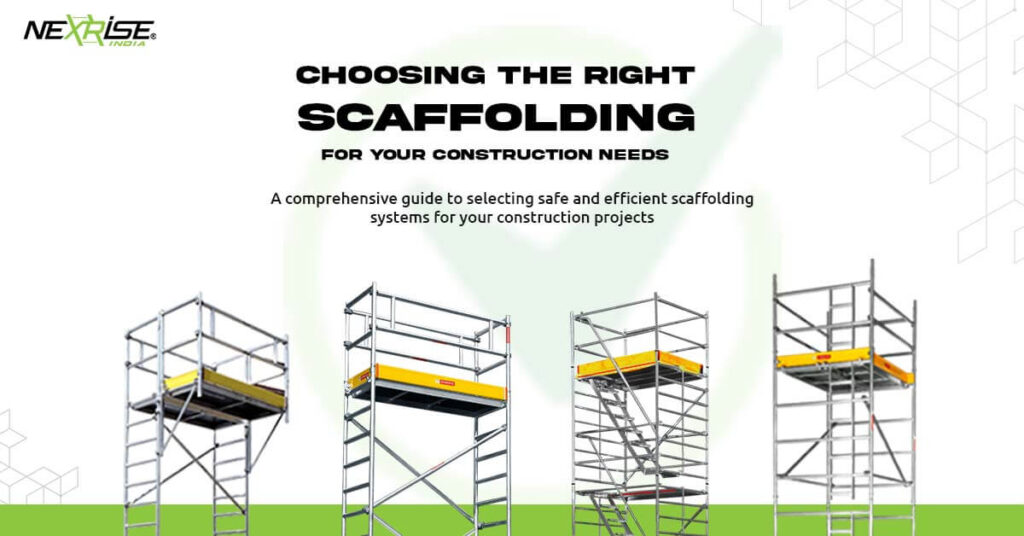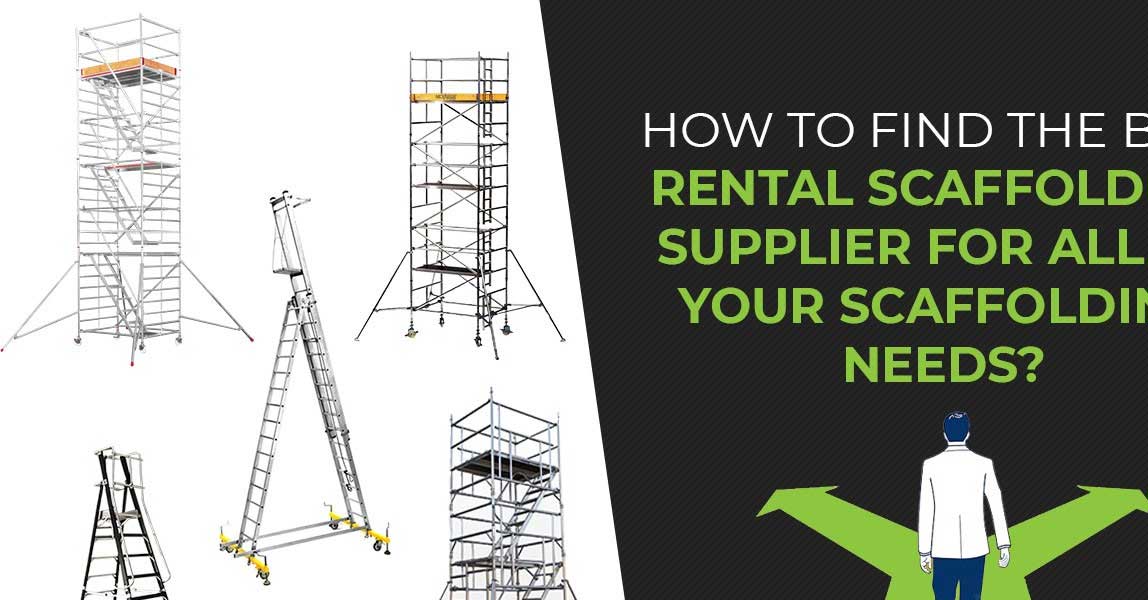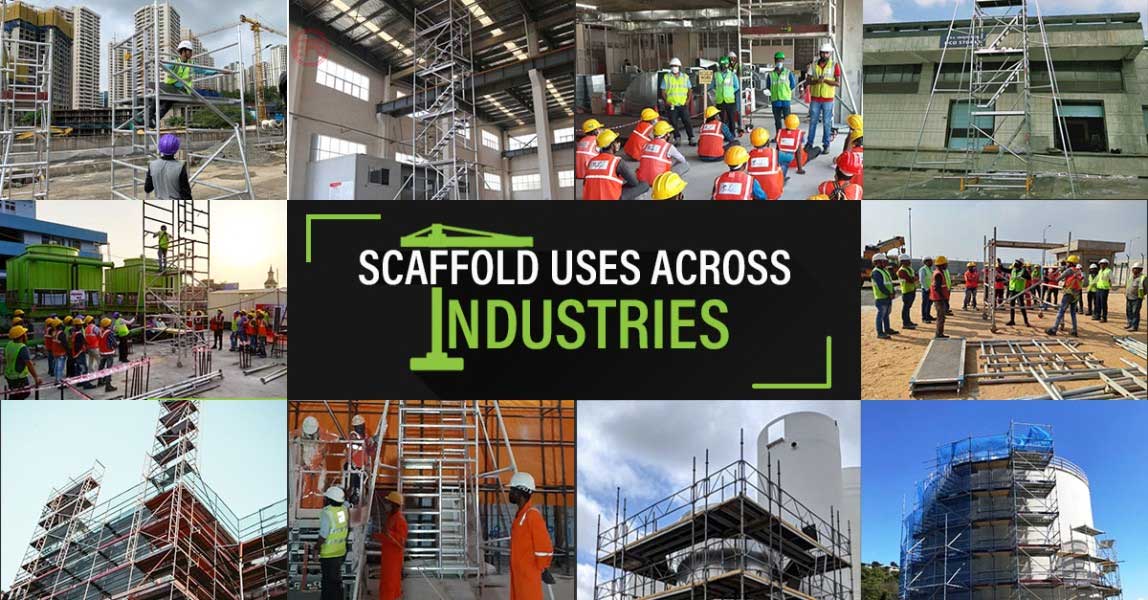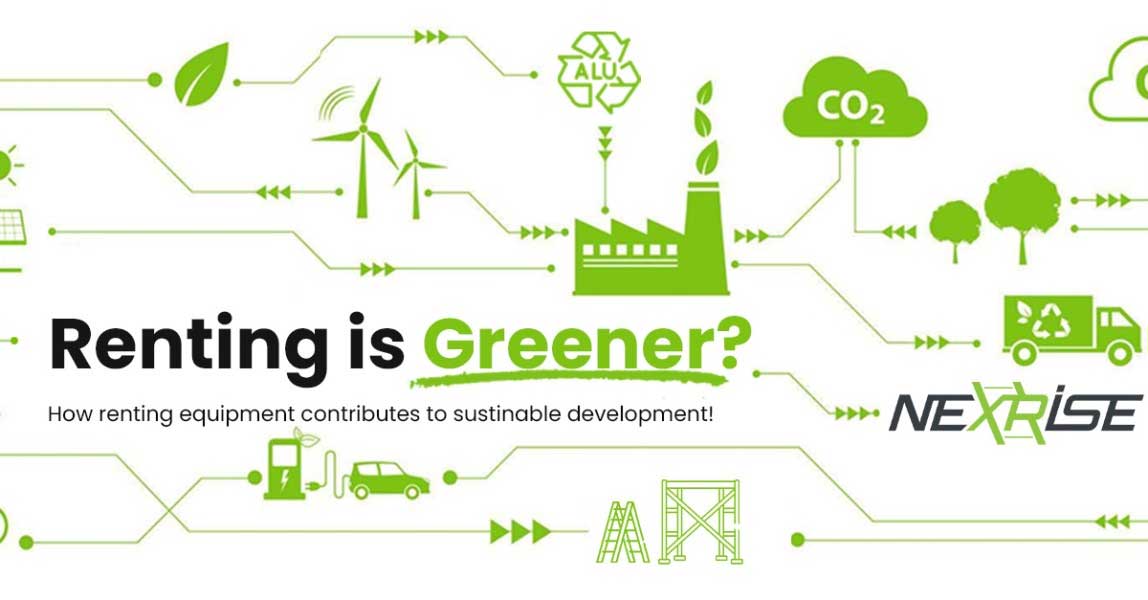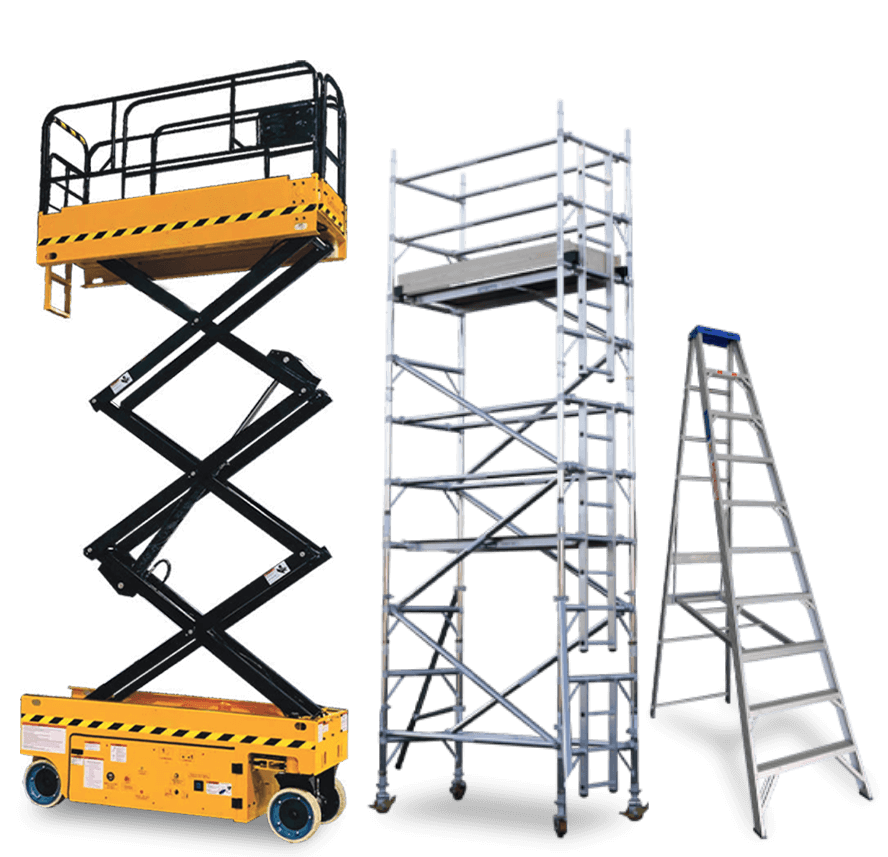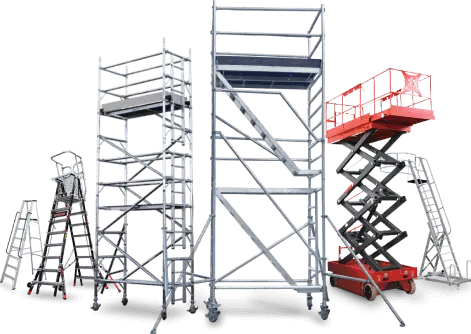Scaffolding is an integral part of the construction industry, providing a temporary structure to support workers and materials as they build, repair, or maintain buildings and other structures. Choosing the right scaffolding for your construction needs is critical for ensuring safety, efficiency, and cost-effectiveness. In this article, we will explore the different types of scaffolding, factors to consider when choosing scaffolding, safety considerations, best practices for scaffolding use and how to Choose the Right Scaffolding.
Types of Scaffolding
Understanding the various types of scaffolding available is the first step in selecting the appropriate system for your project. Each type of scaffolding has its own set of advantages and is suited to different applications.
1. Stairway Version Scaffold
Stairway scaffolding is a specialized type of scaffolding designed to provide safe and convenient access to different levels of a construction site. It integrates stairways into the scaffolding structure, allowing workers to move easily between levels without needing ladders or external access points. This type of scaffolding is particularly useful for projects that involve extensive vertical work and frequent movement between levels.
- Enhanced Safety and Accessibility: Stairway scaffolding provides a built-in, stable access route that reduces the risk of falls compared to ladders. The stairs typically have handrails and non-slip treads, improving safety and accessibility for workers carrying tools and materials.
- Increased Efficiency: With permanent stairways integrated into the scaffold, workers can move between levels more quickly and efficiently. This eliminates the need to climb ladders and navigate makeshift access points, enhancing productivity and reducing downtime.
- Versatility for Different Projects: This type of scaffolding is suitable for a variety of construction and maintenance tasks, including building facades, interior renovations, and complex structures. It can be adapted to different heights and configurations, making it a flexible choice for various project requirements.
2. Narrow Version Scaffold
Narrow version scaffolding, also known as compact or slim scaffolding, is designed for projects where space is limited, such as in narrow alleys, confined areas, or interior spaces. This type of scaffolding provides a stable and safe platform for working in tight conditions, ensuring accessibility and efficiency without compromising on safety.
- Space Efficiency: Narrow version scaffolding is ideal for projects in restricted spaces where traditional scaffolding systems might be too bulky. Its compact design allows for easy maneuverability and access in tight areas, making it suitable for tasks like painting, repair work, and maintenance in urban environments or small interiors.
- Enhanced Accessibility: This type of scaffolding is designed to fit into constrained areas, providing workers with safe and reliable access to high or hard-to-reach places. Its narrow width ensures that it can be positioned close to walls or other structures, minimizing the distance between the work platform and the work area.
- Versatility: Narrow version scaffolding can be used in various settings, including residential, commercial, and industrial projects. It can be adapted to different heights and configurations, making it a flexible choice for a wide range of applications where space constraints are a concern.
3. Ladder frame Version Scaffold
Ladder frame scaffolding, also known as “frame scaffolding,” is a popular type of supported scaffolding that provides a robust and versatile solution for various construction and maintenance tasks. This system is constructed from a series of vertical ladder-like frames connected by horizontal cross braces. It is widely used due to its ease of assembly, stability, and adaptability.
- Easy Assembly and Disassembly: Ladder frame scaffolding is designed for quick and straightforward assembly. The frames are typically connected using locking mechanisms or pins, allowing for fast setup and takedown. This efficiency makes it ideal for projects with tight deadlines or frequent changes.
- Stability and Strength: The frame construction provides a solid and stable platform, supporting significant loads. The horizontal cross braces enhance the overall rigidity of the structure, reducing the risk of swaying or collapsing, which ensures a safer working environment.
- Ease of Transport and Storage: Due to its modular design, ladder frame scaffolding components are relatively lightweight and compact when disassembled. This makes it easier to transport and store, reducing logistical challenges on the construction site.
4. Scaffold with Cantilever
Cantilever scaffolding, also known as needle scaffolding, is a type of scaffolding system used when it is not feasible to erect scaffolding from the ground up. This scaffolding is supported by cantilever beams that are anchored to the structure, allowing work to be carried out without interference from ground-level obstructions.
- Structural Support: Cantilever scaffolding is anchored to the building structure using cantilever beams, which extend outwards to support the scaffold platform. This design allows the scaffold to be erected without the need for ground support, making it ideal for sites with uneven or obstructed ground conditions.
- Applications: This type of scaffolding is commonly used for building repairs, window installations, painting, and other exterior work where ground-level access is restricted or impractical.
5. Folding Frame Version Scaffold
Folding scaffolding is a versatile and portable type of scaffolding designed for easy setup and transportation. It features a collapsible frame that can be folded into a compact form, making it ideal for projects where space and mobility are concerns. This type of scaffolding is commonly used for indoor maintenance, painting, and light construction tasks.
- Portability and Space-Saving: The primary advantage of folding scaffolding is its ability to be easily folded and stored in a compact space. This makes it highly portable and convenient for use in tight or confined areas where traditional scaffolding would be cumbersome.
- Quick Assembly and Disassembly: Folding scaffolding is designed for fast and straightforward assembly and disassembly. This ease of use allows workers to set up and take down the scaffolding quickly, reducing downtime and increasing efficiency on the job site.
- Adjustable Height: Many folding scaffolding models come with adjustable height settings, allowing users to customize the working platform to the required height. This flexibility makes it suitable for a variety of tasks, from minor repairs to reaching elevated work areas.
Factors to Consider When Choosing Right Scaffolding
When choosing scaffolding for your construction project, several key factors should be taken into account to ensure the best fit for your needs:
1. Project Requirements
When selecting scaffolding for your construction project, it’s crucial to assess specific project requirements to ensure the chosen system meets your needs effectively. Understanding these requirements will help you Choose the Right Scaffolding that supports safety, efficiency, and cost-effectiveness.
- Height: Determine the height of the structure you are working on. Different types of scaffolding are suited for various heights; for example, frame scaffolding is typically used for lower heights, while suspended scaffolding is ideal for taller buildings.
- Load Capacity: Assess the weight of workers, materials, and equipment that the scaffolding must support. It’s essential to choose a scaffolding system that can handle the anticipated load without compromising safety. Overloading scaffolding can lead to structural failure and accidents.
- Accessibility: Evaluate the level of access required for the work area. Some scaffolding systems, such as tube and coupler scaffolding, offer greater flexibility in reaching difficult-to-access areas compared to more rigid systems like frame scaffolding.
2. Work Environment
The work environment plays a crucial role in determining the type of scaffolding system that is most suitable for your construction project. Various environmental factors can influence the safety, efficiency, and overall performance of scaffolding. Here are some key considerations to Choose the Right Scaffolding:
- Indoor Scaffolding: Typically requires lighter, more flexible scaffolding systems due to the controlled environment. Less concern for weather impacts but may need to navigate tight spaces and avoid damaging interiors.
- Outdoor Scaffolding: Needs to be robust and weather-resistant to withstand elements like rain, wind, and temperature fluctuations. Additional precautions for stability and worker safety are essential.
- Stable Ground: Allows for standard scaffolding setups with minimal additional support. Ideal for most construction projects where the ground is level and solid.
3. Safety and Compliance
Safety and compliance are crucial components in the use of scaffolding on construction sites, ensuring the well-being of workers and adherence to legal standards. Implementing robust safety measures and complying with regulations can prevent accidents, injuries, and costly penalties.
- Regulations: Ensure that the chosen scaffolding system complies with local building codes and safety regulations. Non-compliance can result in fines, project delays, and increased risk of accidents.
- Safety Features: Look for scaffolding systems with built-in safety features such as guardrails, non-slip platforms, and secure locking mechanisms.
4. Budget and Time Constraints
When choosing scaffolding for your construction project, budget and time constraints are critical factors that can significantly impact your decision. Balancing cost-effectiveness with efficiency requires careful consideration and planning. Here are some key points to keep in mind while Choose the Right Scaffolding to Choose the Right Scaffolding:
Cost: The cost of scaffolding can vary significantly based on the type, materials, and complexity of the system. Consider your budget constraints and choose a scaffolding solution that offers the best value for money.
Assembly and Disassembly Time: Some scaffolding systems are quicker and easier to assemble and disassemble than others. Consider the time and labor required for setup and takedown, especially if the project has tight deadlines.
Safety Considerations
Safety considerations are crucial when working with scaffolding to ensure the well-being of all personnel and to prevent accidents. Proper planning, training, and adherence to safety protocols help maintain a secure work environment and reduce the risk of injuries. Here are key safety considerations Choose the Right Scaffolding:
1. Training and Certification
Ensure all workers involved in erecting, using, or dismantling scaffolding are properly trained and certified. Training should cover safe assembly techniques, hazard recognition, and emergency procedures. Regular refresher courses and updates on safety practices are essential.
2. Inspection and Maintenance
Conduct regular inspections of scaffolding components to check for wear, damage, or defects. Inspections should occur before each use, after incidents, and periodically during prolonged use. Promptly repair or replace any damaged parts to maintain structural integrity
3. Use of Personal Protective Equipment (PPE)
Workers must wear appropriate PPE, including hard hats, safety harnesses, non-slip footwear, and gloves. For tasks at heights, fall protection equipment such as harnesses and lifelines should be used to prevent falls and injuries.
4. Load Management
Adhere to the load capacity limits of the scaffolding. Distribute weight evenly across the platform to avoid overloading and potential collapse. Avoid placing heavy equipment or materials near the edges and ensure that the load is properly secured.
5. Environmental Hazards
Be mindful of environmental conditions such as high winds, rain, or snow that could impact scaffolding stability. Take necessary precautions to secure the scaffolding and protect workers during adverse weather conditions.
Conclusion
Choosing the right scaffolding for your construction needs involves careful consideration of project requirements, work environment, safety and compliance, and budget constraints. By understanding the different types of scaffolding and their applications, you can select the most suitable system for your project.
Prioritizing safety through proper training, inspection, and adherence to best practices will ensure a safe and efficient worksite. Investing time and effort in planning and implementing effective scaffolding solutions will ultimately contribute to the success and safety of your construction projects.
When choosing the right scaffolding for your construction project, it’s crucial to consider factors such as height, load capacity, and the specific tasks you’ll be performing. There are many different types of ladders. Just as it’s important to choose the right ladder for your needs, understanding the differences between Step Ladders vs. Extension Ladders: Which Should You Choose? can also guide you in selecting the right equipment for safe and efficient work.
If you want to buy or rent our aluminium scaffolding. Feel free to call us!
Read more: What are Scaffold Tagging and Types?

